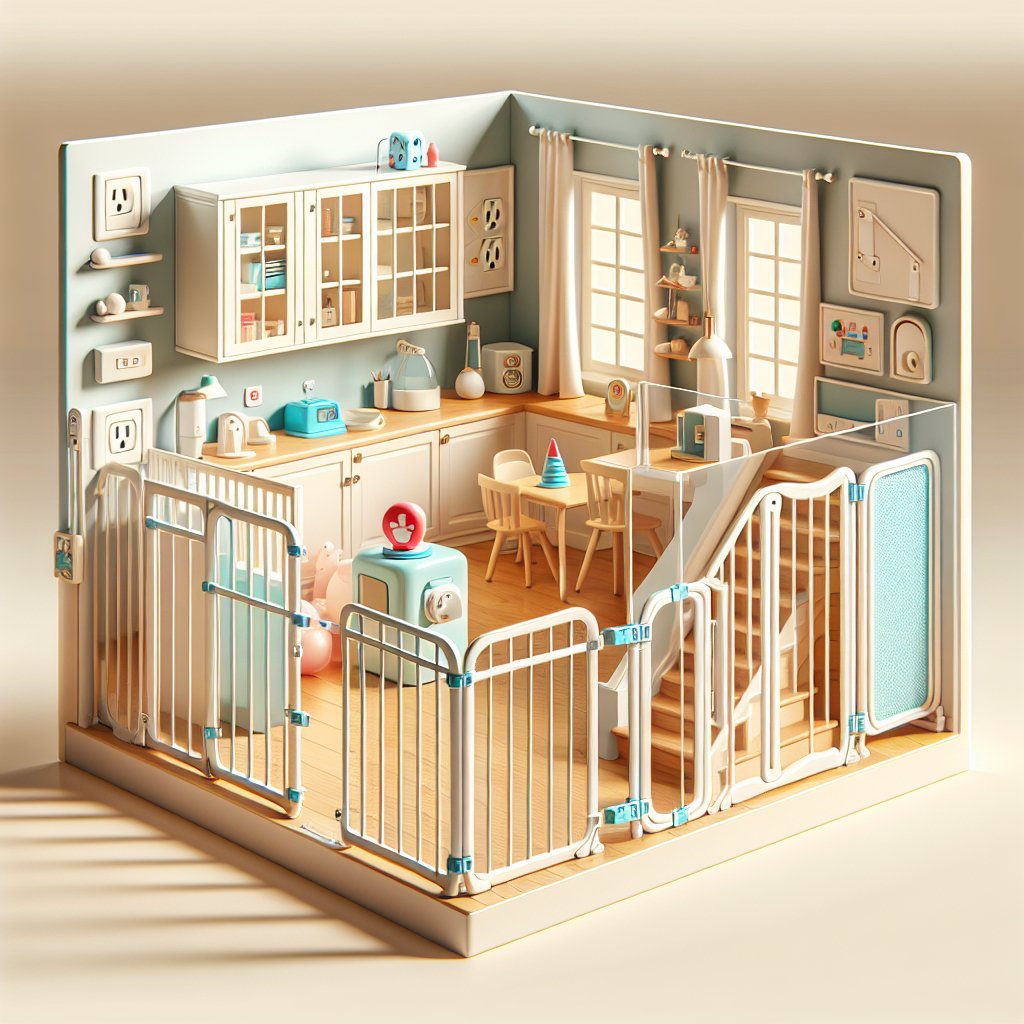Creating a childproof home environment is essential for ensuring the safety and well-being of young children. As they explore their surroundings, children are naturally curious and often unaware of potential dangers. By taking proactive measures to childproof your home, you can minimize risks and create a safe space for your little ones to grow and learn. This article will explore various strategies and tips for making your home safer for children, focusing on different areas of the house and common hazards.
Understanding the Risks
Before diving into specific childproofing techniques, it is crucial to understand the types of risks that children may encounter in a home environment. Children are prone to accidents, and many of these can be prevented with proper precautions. Here are some common risks to consider:
- Sharp Objects: Knives, scissors, and other sharp tools can cause serious injuries if not stored properly.
- Poisonous Substances: Household cleaners, medications, and other toxic substances can be harmful if ingested.
- Electrical Hazards: Exposed wires and electrical outlets can pose a risk of shock or fire.
- Falling Hazards: Stairs, windows, and heavy furniture can lead to falls if not secured.
- Choking Hazards: Small toys and objects can be a choking risk for young children.
By identifying these risks, parents and caregivers can take targeted actions to mitigate them, creating a safer environment for children to explore.
Childproofing Strategies for Different Areas of the Home
Each area of the home presents unique challenges when it comes to childproofing. Below are some effective strategies for various rooms in the house.
Living Room
The living room is often a central gathering place in the home, making it essential to ensure it is safe for children. Here are some tips:
- Secure Furniture: Anchor heavy furniture, such as bookshelves and dressers, to the wall to prevent tipping.
- Remove Sharp Edges: Use corner guards on coffee tables and other furniture with sharp edges to prevent injuries.
- Hide Cords: Use cord organizers or covers to keep electrical cords out of reach and prevent tripping hazards.
- Limit Access to Breakables: Store fragile items, such as glass decor, on high shelves or in cabinets that are not easily accessible to children.
Kitchen
The kitchen can be one of the most dangerous areas for children due to the presence of sharp objects, hot surfaces, and toxic substances. Here are some strategies to childproof the kitchen:
- Cabinet Locks: Install childproof locks on cabinets and drawers that contain sharp utensils, cleaning supplies, or medications.
- Stove Safety: Use stove knob covers and consider using the back burners when cooking to keep hot pots and pans out of reach.
- Countertop Safety: Keep knives and other sharp objects stored away and out of reach, and avoid leaving hot items unattended on countertops.
- Child-Safe Appliances: Use appliances with safety features, such as automatic shut-off, and keep them out of reach when not in use.
Bathroom
The bathroom is another area that requires careful attention when it comes to childproofing. Here are some effective strategies:
- Toilet Locks: Install toilet locks to prevent children from accessing the toilet bowl, which can be a drowning hazard.
- Non-Slip Mats: Use non-slip mats in the bathtub and on the floor to prevent slips and falls.
- Store Medications Safely: Keep medications and personal care products in high cabinets or locked drawers to prevent accidental ingestion.
- Water Temperature Control: Set your water heater to a safe temperature to prevent scalding.
Bedrooms
Children’s bedrooms should be a safe haven for rest and play. Here are some tips for childproofing this space:
- Crib Safety: Ensure that cribs meet safety standards and that there are no loose bedding or toys that could pose a suffocation risk.
- Window Guards: Install window guards or locks to prevent falls from windows.
- Secure Heavy Items: Anchor heavy furniture, such as dressers and bookshelves, to the wall to prevent tipping.
- Limit Small Toys: Avoid toys with small parts that could pose a choking hazard for younger children.
Additional Childproofing Tips
In addition to room-specific strategies, there are several general childproofing tips that can enhance safety throughout the home:
- Use Safety Gates: Install safety gates at the top and bottom of stairs to prevent falls.
- Educate Older Children: Teach older siblings about safety and the importance of keeping small items out of reach of younger children.
- Regularly Inspect the Home: Conduct regular safety checks to identify and address new hazards as children grow and become more mobile.
- Emergency Preparedness: Have a first aid kit readily available and ensure that all caregivers know how to respond in case of an emergency.
Conclusion
Creating a childproof home environment is an ongoing process that requires vigilance and adaptability. By understanding the risks and implementing effective childproofing strategies in various areas of the home, parents and caregivers can significantly reduce the likelihood of accidents and injuries. Remember that as children grow and develop new skills, their needs and the potential hazards in the home will change. Regularly reassessing your childproofing measures and making necessary adjustments will help ensure a safe and nurturing environment for your children to thrive.




